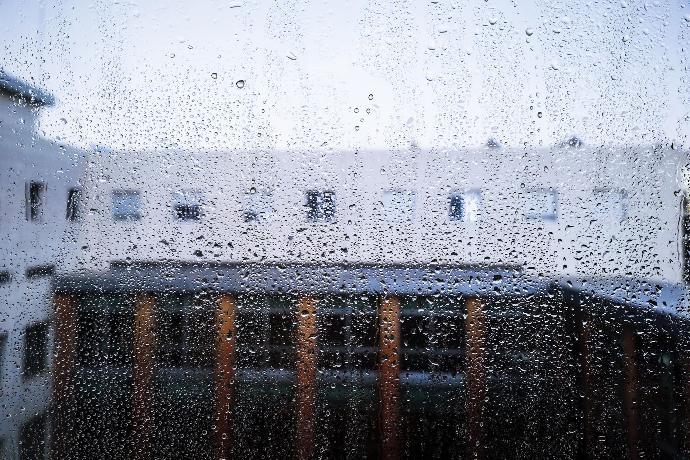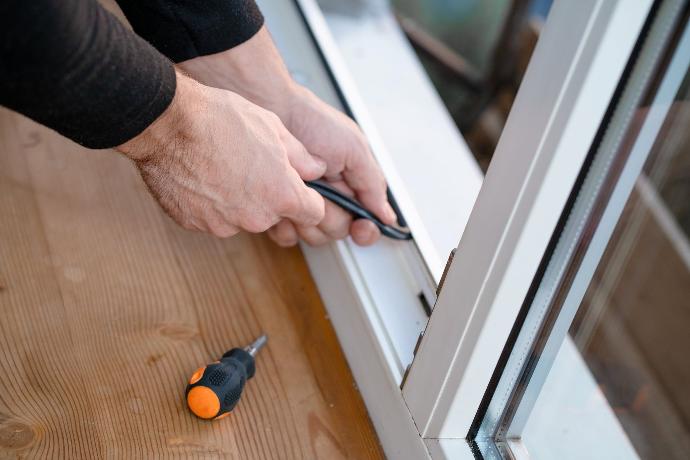Window condensation is a common issue in homes, particularly during the colder months. It occurs when warm, moist air inside a room comes into contact with the cooler surface of a window pane, causing the moisture in the air to condense into water droplets. It is often indicative of high indoor humidity and is most noticeable when there is a significant difference between indoor and outdoor temperatures.
Daily activities like cooking, bathing and drying clothes can increase indoor humidity. When this humid air meets the cold window glass, it cools down rapidly and the moisture it carries condenses. While it may seem harmless, ongoing condensation can lead to problems like mold growth and damage to window frames, particularly on old-style wooden windows.
To manage condensation, it's important to control the humidity levels in your home. This can be achieved by using dehumidifiers, ensuring proper ventilation in high-moisture areas like kitchens and bathrooms, and maintaining a consistent indoor temperature. In the long term, installing double-glazed windows can also be an effective solution, as they help maintain a warmer surface on the interior glass, reducing the likelihood of condensation.

Why is Condensation a Problem?
Addressing window condensation is not just a matter of aesthetics but also of health, home maintenance and energy efficiency. It may seem like a minor short-term issue during the winter months but it can lead to several long-term problems if not properly addressed.
- Structural
Problems: Prolonged exposure to moisture from condensation can cause wooden
window frames and sills to rot, weaken the structural integrity of walls and
lead to the deterioration of plaster and paint. Over time this damage can
become extensive and require costly repairs.
- Mold and
Mildew Growth: One of the most significant issues with condensation is that
it creates an ideal environment for mold and mildew to thrive. These fungi can
grow on walls, ceilings, window frames and other surfaces where moisture
accumulates.
- Health
Risks: Mold not only damages the surfaces on which it grows but also poses
health risks, particularly to those with allergies, asthma or compromised immune
systems. Prolonged exposure can lead to respiratory issues, allergic reactions
and other health problems. The spores released by mold can be especially
harmful when inhaled, creating significant concern in living and working
environments.
- Reduced
Indoor Air Quality: Condensation and the resulting mold and mildew growth
can significantly reduce indoor air quality. This can lead to a smelly musty
odor and an uncomfortable living environment.
- Energy Efficiency Loss: In cases where condensation affects insulation materials, it can reduce their effectiveness. Wet insulation loses its insulative properties, leading to higher energy costs and increased heat loss in winter and heat gain in summer.
Will Replacing Window Seals Stop Condensation?
Damaged, split or otherwise perished glazing gaskets undermine the windows ability to insulate and regulate temperature, leading to increased drafts and moisture infiltration. A failed window seal increases the overall humidity level around the window, promoting condensation on the colder surface of the glass.
Damaged, split or otherwise perished glazing gaskets undermine the windows ability to insulate and regulate temperature, leading to increased drafts and moisture infiltration. A failed window seal increases the overall humidity level around the window, promoting condensation on the colder surface of the glass.
Replacing your damaged window seals is an essential step in reducing condensation around your windows. By creating an airtight and watertight seal between the window and frame, you can keep the interior pane of glass at a relatively stable temperature. Seals that function correctly will improve the windows ability to keep warm air in and cold air out, resulting in lower humidity levels. In addition to reduced condensation, replacing your glazing gasket will also improve energy efficiency and heat retention within your home.

While replacing window seals can be part of the solution to reduce condensation, it’s important to consider all factors that may be contributing to the problem. Other ways of preventing condensation should also be considered to reduce the chance of mold growth and the associated health concerns. A comprehensive approach that includes managing indoor humidity and upgrading windows will positivity benefit your living quality.
- Improve
Ventilation: Increasing airflow in your home will help reduce the moisture
level in your key living areas. This can be as simple as opening a window for 15
minutes each day, using extractor fans in the kitchen and bathroom and ensuring
vents, such as those attached to tumble dryers, are directed outside of your
home.
- Use a
Dehumidifier: In areas with high humidity, a dehumidifier can help remove
excess moisture from the air. This is particularly useful in damp areas like
conservatories, or rooms used to dry wet clothes.
- Maintain
a Consistent Indoor Temperature: Keeping your home at a steady, warm
temperature can prevent the interior surface of your windows from getting too
cold. By keeping your windows at a stable temperature, you can reduce the
amount of condensation.
- Upgrade Windows: If you have single-pane windows or inefficient double-pane windows, it may be worth considering upgrading to more efficient modern windows. Double or triple glazing with good quality frames can significantly reduce condensation, as well as help keep hot air within your room.
Should I Wipe Condensation Off My Windows?
Wiping condensation off your windows is a practical step in maintaining a comfortable living environment. Condensation, if left unchecked, can lead to several problems so removing it before it has the chance to accumulate and seep into the walls is essential.
Removing the condensation is a straightforward process that can be completed with some simple tools and steps. Using a clean, absorbent cloth or towel that is highly absorbent will allow you to wipe the window and absorb the moisture. For large windows, a squeegee may be more efficient. This will also maintain clear visibility and allow natural light to enter your home without obstruction. After wiping the glass it is essential to dry the window sill and frame. This helps prevent water damage and mold growth in these areas.
Remember, regularly wiping off condensation not only protects your windows and sills but also helps maintain healthier indoor air quality by preventing mold growth. If you find that condensation is a persistent issue, it might be worth investigating other solutions like improving your home's insulation or ventilation.
Seals Direct are able to help with the supply of replacement glazing, door and window seals for instances where you feel it is necessary to replace your existing section. For support in choosing the correct profile, please contact our helpful and knowledgeable team.